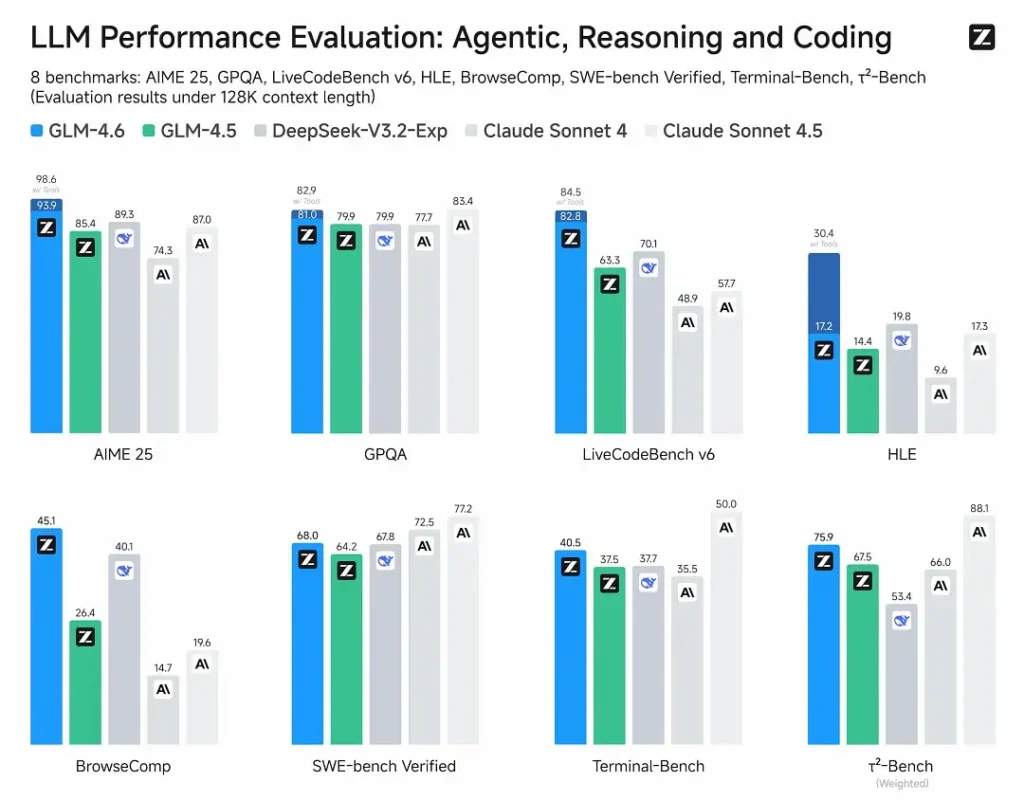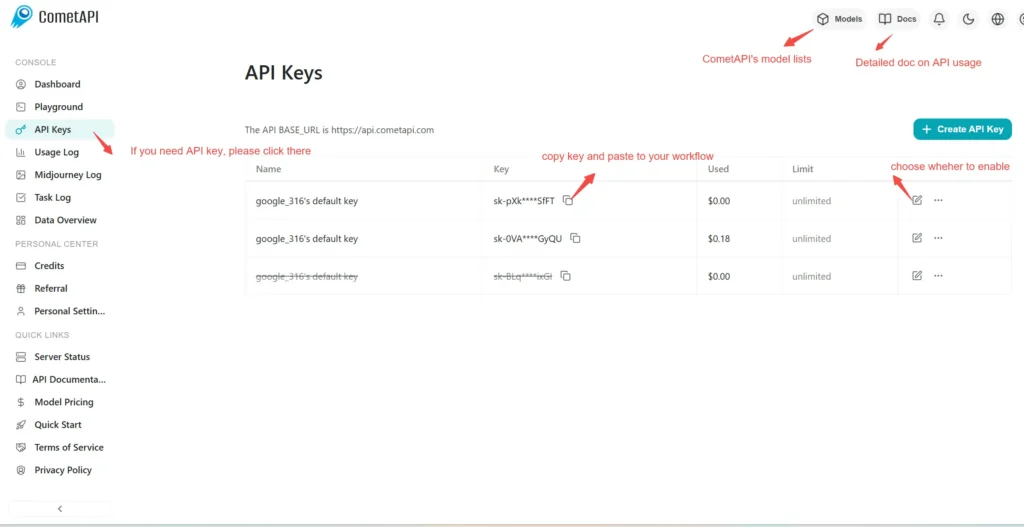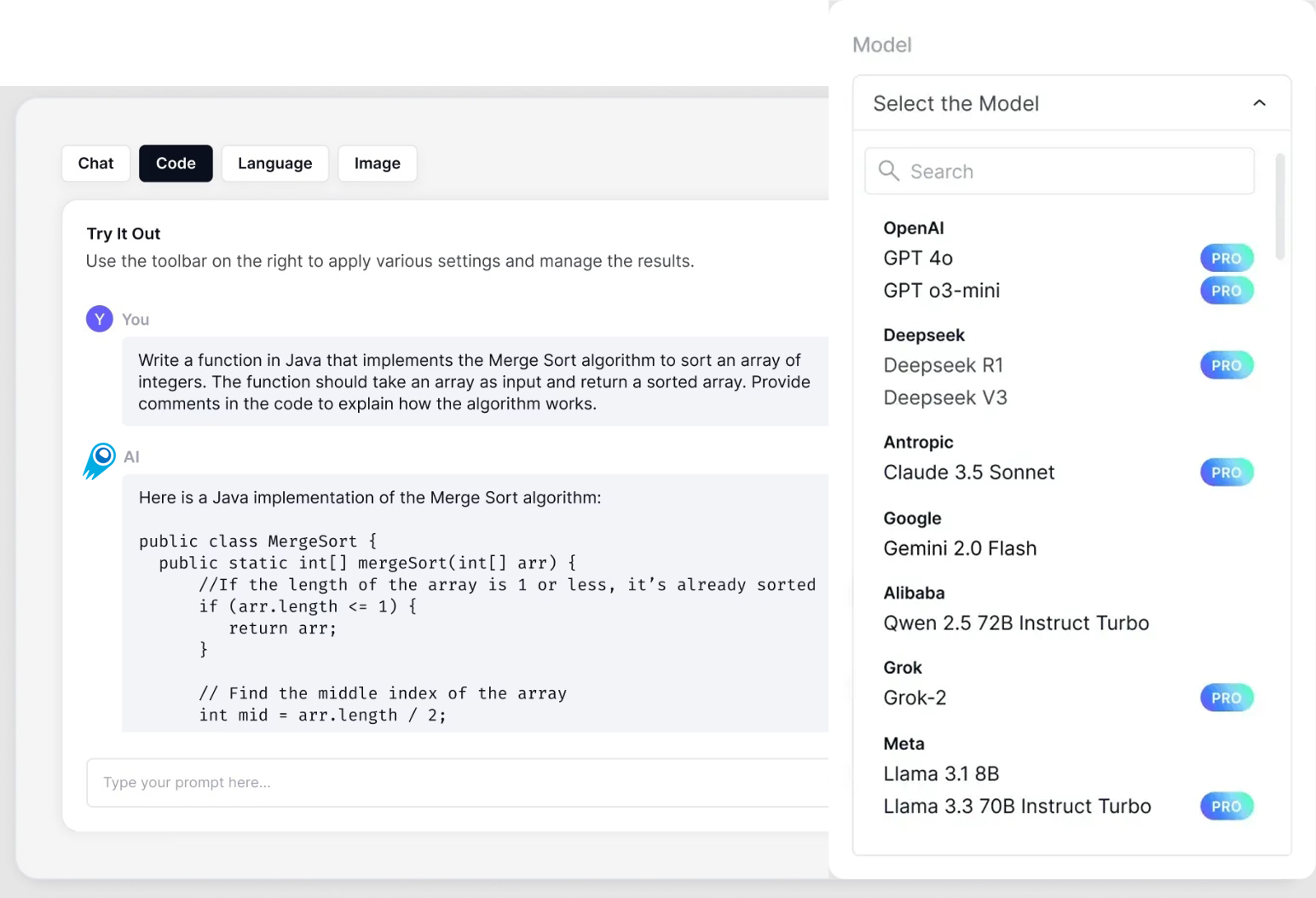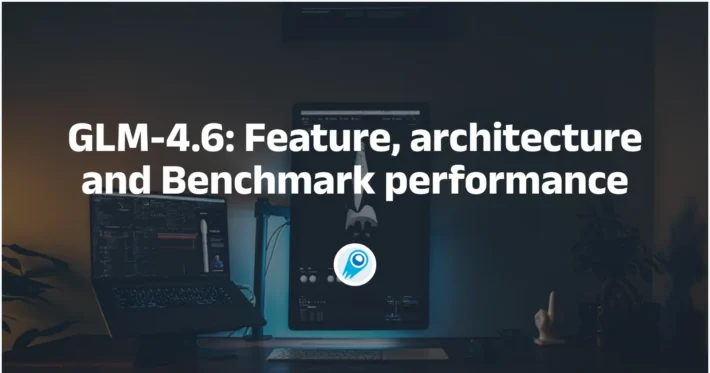GLM-4.6 is the latest major release in Z.ai’s (formerly Zhipu AI) GLM family: a 4th-generation, large-language MoE (Mixture-of-Experts) model tuned for agentic workflows, long-context reasoning and real-world coding. The release emphasizes practical agent/tool integration, a very large context window, and open-weight availability for local deployment.
Key features
- Long context — native 200K token context window (expanded from 128K). ([docs.z.ai][1])
- Coding & agentic capability — marketed improvements on real-world coding tasks and better tool invocation for agents.
- Efficiency — reported ~30% lower token consumption vs GLM-4.5 on Z.ai’s tests.
- Deployment & quantization — first announced FP8 and Int4 integration for Cambricon chips; native FP8 support on Moore Threads via vLLM.
- Model size & tensor type — published artifacts indicate a ~357B-parameter model (BF16 / F32 tensors) on Hugging Face.
Technical details
Modalities & formats. GLM-4.6 is a text-only LLM (input and output modalities: text). Context length = 200K tokens; max output = 128K tokens.
Quantization & hardware support. The team reports FP8/Int4 quantization on Cambricon chips and native FP8 execution on Moore Threads GPUs using vLLM for inference — important for lowering inference cost and allowing on-prem and domestic cloud deployments.
Tooling & integrations. GLM-4.6 is distributed through Z.ai’s API, third-party provider networks (e.g., CometAPI), and integrated into coding agents (Claude Code, Cline, Roo Code, Kilo Code).
Technical details
Modalities & formats. GLM-4.6 is a text-only LLM (input and output modalities: text). Context length = 200K tokens; max output = 128K tokens.
Quantization & hardware support. The team reports FP8/Int4 quantization on Cambricon chips and native FP8 execution on Moore Threads GPUs using vLLM for inference — important for lowering inference cost and allowing on-prem and domestic cloud deployments.
Tooling & integrations. GLM-4.6 is distributed through Z.ai’s API, third-party provider networks (e.g., CometAPI), and integrated into coding agents (Claude Code, Cline, Roo Code, Kilo Code).
Benchmark performance
- Published evaluations: GLM-4.6 was tested on eight public benchmarks covering agents, reasoning and coding and shows clear gains over GLM-4.5. On human-evaluated, real-world coding tests (extended CC-Bench), GLM-4.6 uses ~15% fewer tokens vs GLM-4.5 and posts a ~48.6% win rate vs Anthropic’s Claude Sonnet 4 (near-parity on many leaderboards).
- Positioning: results claim GLM-4.6 is competitive with leading domestic and international models (examples cited include DeepSeek-V3.1 and Claude Sonnet 4).

Limitations & risks
- Hallucinations & mistakes: like all current LLMs, GLM-4.6 can and does make factual errors — Z.ai’s docs explicitly warn outputs may contain mistakes. Users should apply verification & retrieval/RAG for critical content.
- Model complexity & serving cost: 200K context and very large outputs dramatically increase memory & latency demands and can raise inference costs; quantized/inference engineering is required to run at scale.
- Domain gaps: while GLM-4.6 reports strong agent/coding performance, some public reports note it still lags certain versions of competing models in specific microbenchmarks (e.g., some coding metrics vs Sonnet 4.5). Assess per-task before replacing production models.
- Safety & policy: open weights increase accessibility but also raise stewardship questions (mitigations, guardrails, and red-teaming remain the user’s responsibility).
Use cases
- Agentic systems & tool orchestration: long agent traces, multi-tool planning, dynamic tool invocation; the model’s agentic tuning is a key selling point.
- Real-world coding assistants: multi-turn code generation, code review and interactive IDE assistants (integrated in Claude Code, Cline, Roo Code—per Z.ai). Token efficiency improvements make it attractive for heavy-use developer plans.
- Long-document workflows: summarization, multi-document synthesis, long legal/technical reviews due to the 200K window.
- Content creation & virtual characters: extended dialogues, consistent persona maintenance in multi-turn scenarios.
How GLM-4.6 compares to other models
- GLM-4.5 → GLM-4.6: step change in context size (128K → 200K) and token efficiency (~15% fewer tokens on CC-Bench); improved agent/tool use.
- GLM-4.6 vs Claude Sonnet 4 / Sonnet 4.5: Z.ai reports near parity on several leaderboards and a ~48.6% win rate on the CC-Bench real-world coding tasks (i.e., close competition, with some microbenchmarks where Sonnet still leads). For many engineering teams, GLM-4.6 is positioned as a cost-efficient alternative.
- GLM-4.6 vs other long-context models (DeepSeek, Gemini variants, GPT-4 family): GLM-4.6 emphasizes large context & agentic coding workflows; relative strengths depend on metric (token efficiency/agent integration vs raw code synthesis accuracy or safety pipelines). Empirical selection should be task-driven.
Zhipu AI’s latest flagship model GLM-4.6 released: 355B total params, 32B active. Surpasses GLM-4.5 in all core capabilities.
- Coding: Aligns with Claude Sonnet 4, best in China.
- Context: Expanded to 200K (from 128K).
- Reasoning: Improved, supports tool calling during inference.
- Search: Enhanced tool calling and agent performance.
- Writing: Better aligns with human preferences in style, readability, and role-playing.
- Multilingual: Boosted cross-language translation.
How to call GLM–4.6 API from CometAPI
GLM‑4.6 API Pricing in CometAPI,20% off the official price:
- Input Tokens: $0.64 M tokens
- Output Tokens: $2.56/ M tokens
Required Steps
- Log in to cometapi.com. If you are not our user yet, please register first.
- Sign into your CometAPI console.
- Get the access credential API key of the interface. Click “Add Token” at the API token in the personal center, get the token key: sk-xxxxx and submit.

Use Method
- Select the “
glm-4.6” endpoint to send the API request and set the request body. The request method and request body are obtained from our website API doc. Our website also provides Apifox test for your convenience. - Replace <YOUR_API_KEY> with your actual CometAPI key from your account.
- Insert your question or request into the content field—this is what the model will respond to.
- . Process the API response to get the generated answer.
CometAPI provides a fully compatible REST API—for seamless migration. Key details to API doc:
- Base URL: https://api.cometapi.com/v1/chat/completions
- Model Names: “
glm-4.6“ - Authentication:
Bearer YOUR_CometAPI_API_KEYheader - Content-Type:
application/json.
API Integration & Examples
Below is a Python snippet demonstrating how to invoke GLM‑4.6 via CometAPI’s API. Replace <API_KEY> and <PROMPT> accordingly:
import requests
API_URL = "https://api.cometapi.com/v1/chat/completions"
headers = {
"Authorization": "Bearer <API_KEY>",
"Content-Type": "application/json"
}
payload = {
"model": "glm-4.6",
"messages": [
{"role": "system", "content": "You are a helpful assistant."},
{"role": "user", "content": "<PROMPT>"}
],
"max_tokens": 512,
"temperature": 0.7
}
response = requests.post(API_URL, json=payload, headers=headers)
print(response.json()["choices"][0]["message"]["content"])Key Parameters:
- model: Specifies the GLM‑4.6 variant
- max_tokens: Controls output length
- temperature: Adjusts creativity vs. determinism
See also Claude Sonnet 4.5



